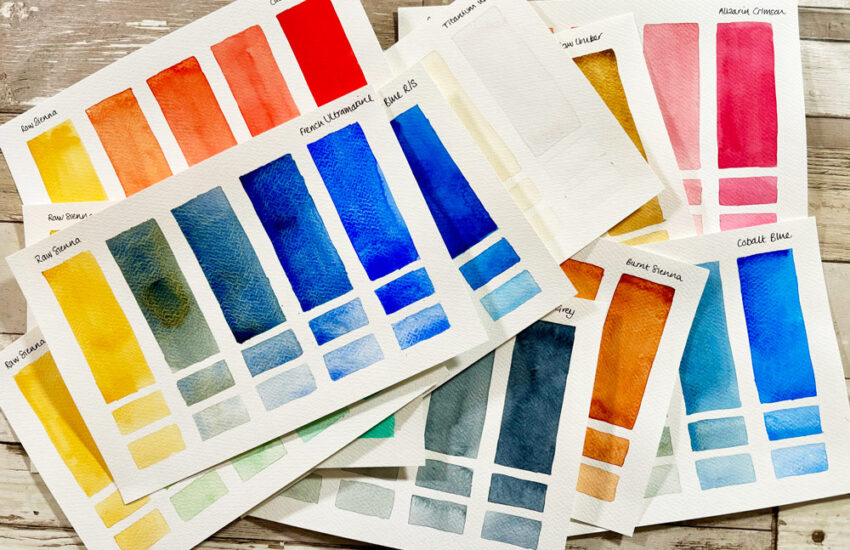The Joy Of Colour Mixing In Oils
Derek Powell-Jones is an internationally acclaimed artist who has been painting in oils for over 60 years. His art hangs in private collections in the USA & Europe, the RMT headquarters and HRH King Charles III also owns two of Derek’s paintings. Derek uses a limited palette and in this article he shares his tips for colour mixing with oils.
The benefits of using a limited palette

You should enjoy the process of mixing colours as part of your painting experience. The benefit of mixing this way means that your eye is trained to extract colour from your subject. For example have a close look at clouds on a grey day, you will see that the grey is actually either a brown tinge or a blue tinge never a black and white grey. The more you look, the more you see. All of my students have grasped the theory of looking for colour technique in a matter of hours. My belief is that you can paint. It is amazing how anyone can paint if they want to. The hardest part of painting is having a go. Why not get your paints & brushes out and work along with me?

My colour palette
The paint I use is Winsor & Newton Artisan Water Mixable Oil Colour. I have used lots of other oils but for me these give the best results as the are faster drying than traditional oils and more convenient to clean up.
My palette consists of;
- Titanium White
- Cadmium Red Hue
- Phthalo Blue Red Shade
- Cadmium Yellow Medium
You will notice that black is not used my my palette. The mixing palette you use is up to you. I use glass, wood and waxed paper palette tear off sheets.
Mixing Colours
Green

Before we start mixing different shades of green you need to mix an initial green. From this large blob of initial green we are going to create four off shoots with a series of interconnecting bubbles.
Start by mixing blue and yellow in about equal quantities. Now look at the colour you’ve mixed, is it more bluey green or yellowy green? Check back at your subject then adjust the colour by adding either blue or yellow to the edge of the initial green blob. Make sure that you don’t spoil the initial green by creating another bubble of colour that adjoins it. Keep adding more of the same colour to the edge of the new bubble to create another. Keep going and you will get subtle shades of green.
Go back to the initial green blob and add more blue or yellow to the other side of the blob (the opposite colour to the first offshoot). Repeat the same process by adding more of the same colour and creating a series of interconnecting circles.
Now add white to the edge of the bubbles and more tints of green are achieved.
If you add a small touch of red to the initial green (not enough to go brown) you will get a more Constable green. Again add yellow to the edge and so on like before, finally adding bubbles with white in the mix.
Brown

Start by adding red to the palette. Now add blue, then yellow and then mix and you have brown. Just as before, add yellow to the edge of this mix and start creating adjoining circles containing shades of brown. Adjust the brown by adding more blue or yellow. For more of a red brown add more red and yellow, then a shade of yellow ochre is mixed. Lastly add white to the edge of the bubbles to create some tints. You will see the shades that suit your subject.
Black

I do not use black from a tube as nature is not black unless you are in a coal house at midnight with the lights turned off! I cannot stress enough how important it is to have a clean brush for this technique. Blue is the darkest colour so start with blue, add red and mix together and a very dark purple emerges. Now add a small brush tip of yellow and you will get black. To see if the black is towards blue or brown add white to the edge. Look to see which way it has gone. Always mix on the edge so as not to contaminate the original mix.

It is a good exercise to have a session mixing colours and see how many you can mix. I cannot stress enough the art of looking. Look at your subject, extract the colours and then get mixing. All my students paint with a limited palette successfully. It is all about looking. Nothing is hidden. Good luck, you will amaze yourself.








